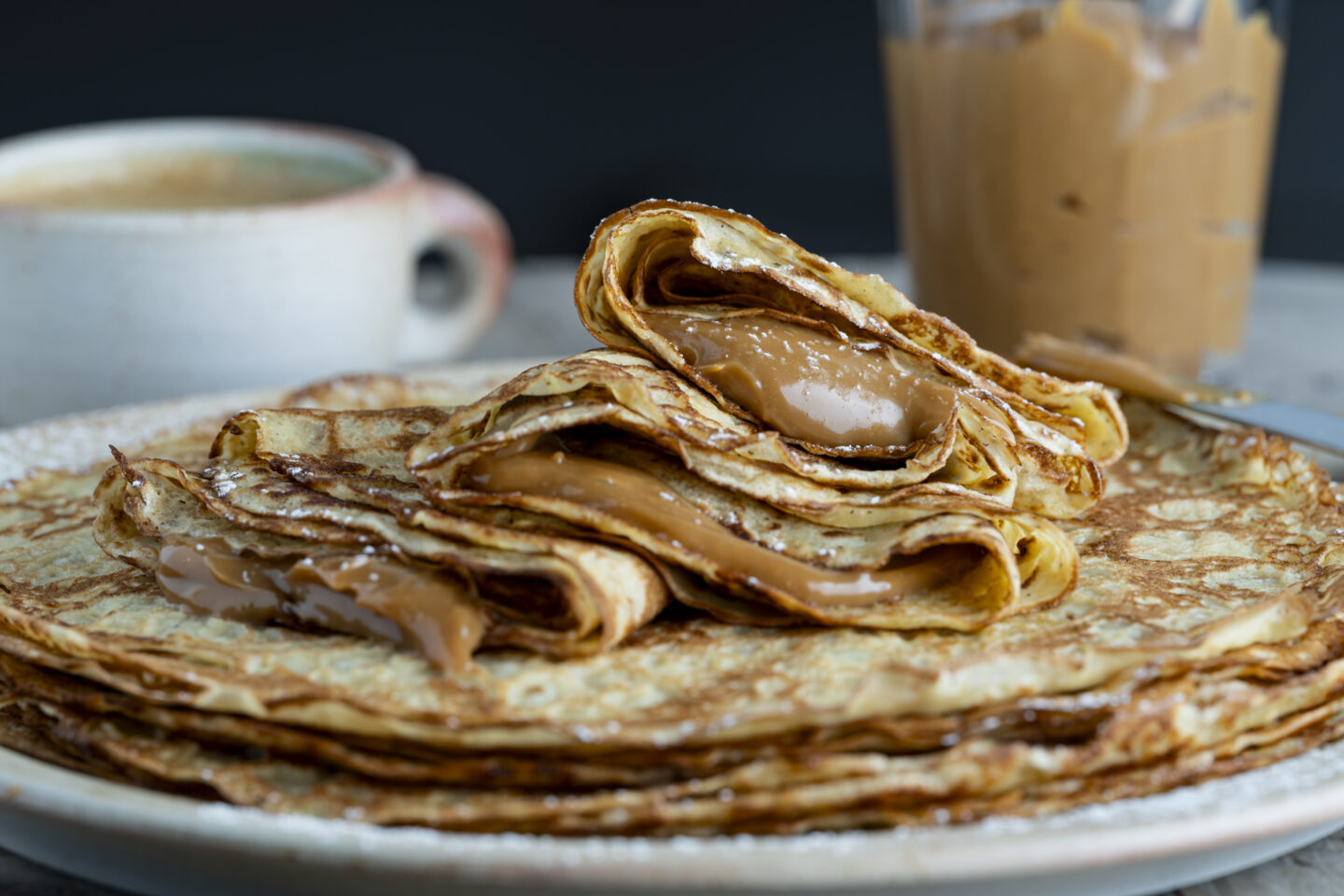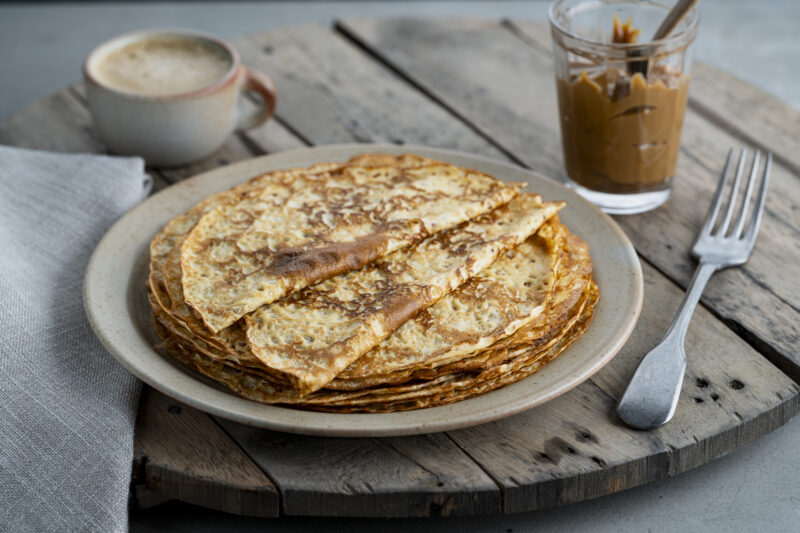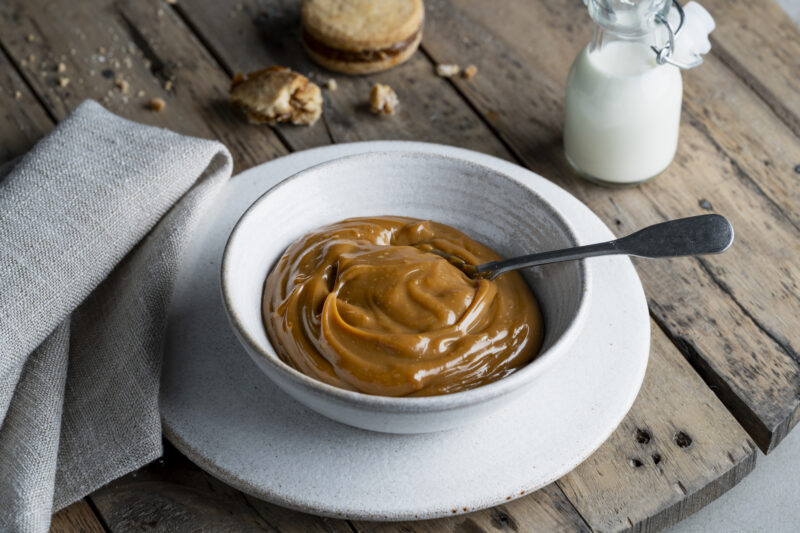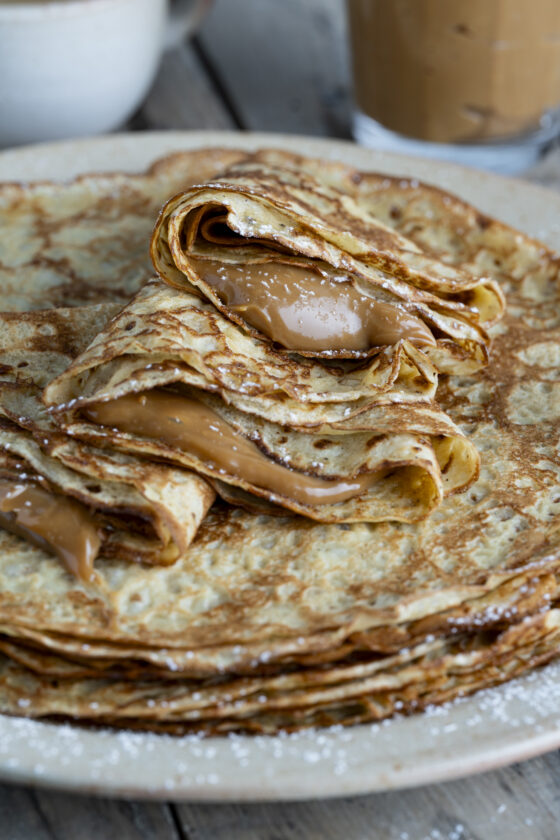Crepes with dulce de leche
Have you ever heard of Candlemas? It's a Christian festival celebrated on February 2, and that's when we eat pancakes! This year, I'm making them with dulce de leche, an inspiration from a trip through Argentina. It's a real treat for sweet-tooths and very easy to make. But what is Candlemas? Why do we eat pancakes at that time? And what is even dulce de leche? Read on to find out more about this sweet celebration.

What is Candlemas?
Candlemas is a festival with deep Christian roots. It marks the day when Mary presented her son, Jesus, in the temple of Jerusalem, forty days after his birth.
Forty days of impurity
According to Jewish tradition, if a son was born, the mother was considered unclean for forty days and wasn't allowed to go to the temple during that time. If the child was a girl, then that period was extended to eighty days. As part of the cleansing ritual, the new parents had to sacrifice an animal to symbolize the mother's purification. For wealthy families, it was a lamb; for poor people like Joseph and Mary, it was two doves.
The connection with light
According to the Christian Bible, in the temple in Jerusalem, the elderly Simeon met Joseph and Mary. Simeon had been promised by God that he would live until he witnessed the coming of the Messiah. When he saw Jesus, Simeon immediately recognized him as "the light of the new world" (Bible, New Testament, Luke 1:78-79).
A religious celebration
The celebration of Jesus' presentation at the temple in Jerusalem wasn't a religious festival until the fifth century. That's when Pope Gelasius I led a procession with torches in Rome, and the practice spread throughout the Catholic world. Later, in the tenth century, the torches were replaced with burning candles, which were blessed and protected the faithful from misfortune during the year ahead.
A Catholic festival with pagan roots
A lot of Christian celebrations actually come from pagan festivals. In fact, one of the best ways to convert pagans to Christianity was to build on their local traditions.
February is the last month of winter. The days are getting longer, there's more light, and we feel that spring is on its way. The Celts held a purification festival in February to celebrate the earth getting ready to sprout seeds again. At Candlemas, we celebrate the light and the mother as symbols of new life. For Christians, it's a celebration of Mary, and for others, it's a celebration of mother earth.
Why pancakes on Candlemas?
Pancakes have been around for thousands of years. They come in all shapes and sizes and are made with all kinds of ingredients. According to Christian sources, Pope Gelasius I offered the pilgrims flat galettes, a staple food of the Romans at the time. Later on, flat galettes were baked in the hearth in February with the last bits of flour left over from the previous harvest. The shape and color of the hearth cakes were symbolic of the sun.
The hearth cakes became pancakes, and the belief that eating pancakes on Candlemas would bring prosperity and good luck stuck around as a superstition for centuries.
Sweet or savory?
On Candlemas, you can have pancakes with sugar or savory flavors. You can make your pancakes from wheat or buckwheat flour, or other kinds of flour like oat or einkorn flour. In the old days, wheat flour and sugar were eaten only by the rich. Poorer people and farmers had to make do with buckwheat. Nowadays, it is more about personal taste and food intolerances.

Crepes with dulce de leche
Crepes with dulce de leche are the perfect way to bring a touch of sweetness to the dark and cold days of February. Make them for Candlemas and treat yourself to this classic Argentine dish.
What is dulce de leche
Dulce de leche is an Argentine delicacy made with milk and sugar, sometimes with a touch of vanilla. You boil the ingredients for several hours until the mixture caramelizes completely to get a paste. It's a favorite of the Argentinians who eat it with anything and everything.

Recipe
This recipe makes about18 thin European-style pancakes, also called crêpes, using a 24-cm pan.
Ingredients:
- 150 g wheat flour
- 400 ml plain or oat milk
- 2 eggs plus 1 egg yolk
- 2 teaspoons vanilla sugar
- A pinch of salt
- 1 tablespoon melted butter
- Dulce de leche for filling
- Butter for baking
-
Step 1: make the batter
In a bowl, beat the eggs and egg yolk. Then add the milk, flour, sugar, salt, and melted butter and keep beating until the batter is all mixed together and there are no lumps. For a smooth result, strain the batter using a sieve. Finally, cover the batter and let it sit for about an hour.
-
Step 2: bake the pancakes
Heat up a nonstick skillet on medium-high. Add a bit of butter and spread it evenly with a pastry brush. Pour in a ladle of batter and move the pan around until the whole surface is covered. For a 24-centimeter pan, you'll need 50 milliliters of batter. When the edges of the pancake are nice and brown and curl up a bit, flip the pancake over with a wide spatula. Continue baking the pancake until it's also a nice light brown on the other side.
Repeat until all the batter is used up. You can keep the pancakes warm in a warming drawer covered with a lid or aluminum foil.
-
Step 3: fill the pancakes
Spread some dulce de leche on the pancakes and then fold or roll them up. If you're feeling extra indulgent, sprinkle them with powdered sugar or serve them up with ice cream.
![Pancakes Dulce de Leche 00067]()
